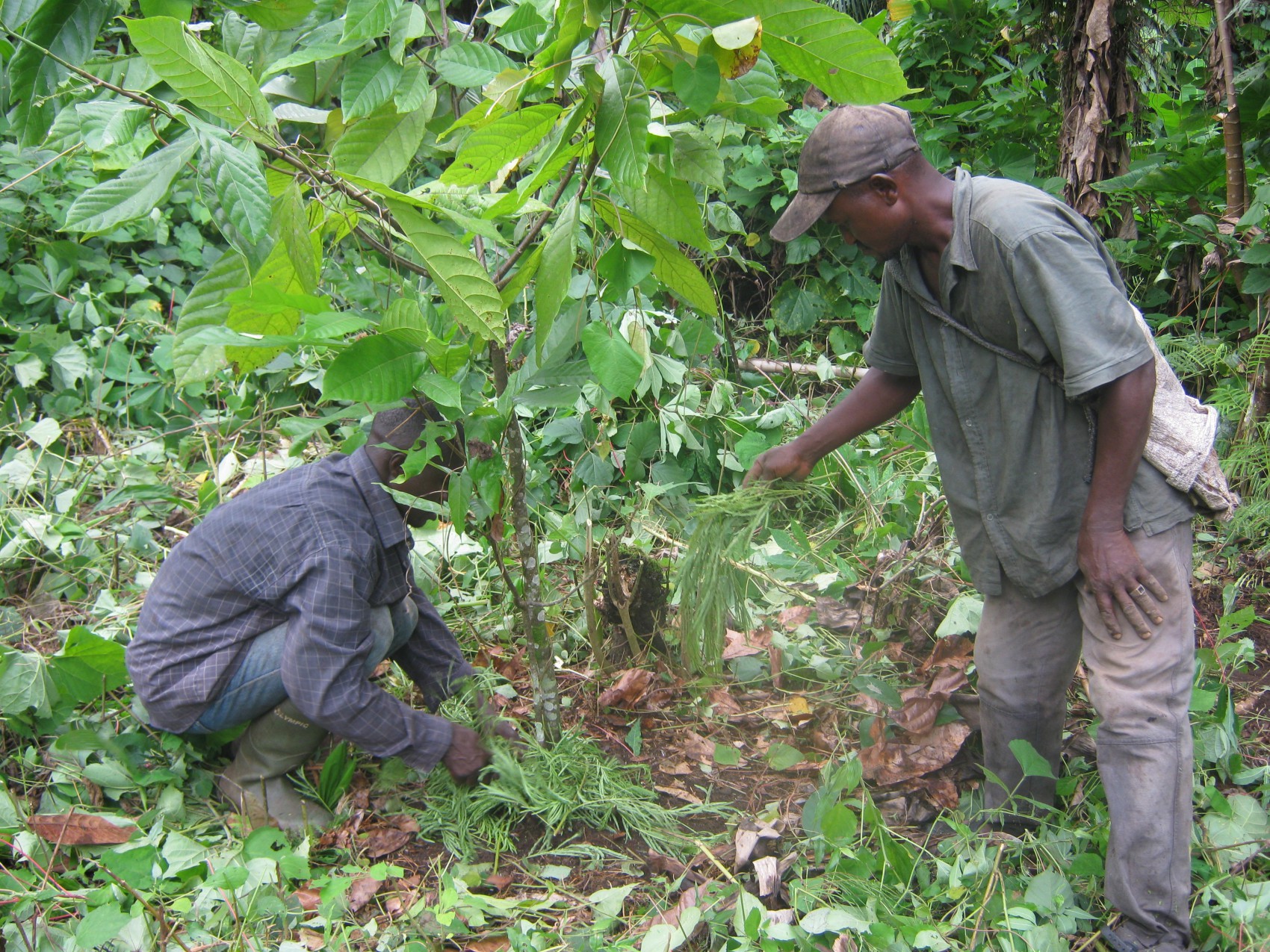What is agroforestry?
Agroforestry blends farm and forest. It’s about growing more with less.
Think of an agroforest as is its own, happy-micro-ecosystem — cultivated with a creative mix of plants, animals and insects. Every living thing in the agroforest microsystem compliments everything else. Trees prevent erosion. Plants create soil. Animals fertilize plants. Everything grows. In short, agroforestry makes for a healthier yield, happier farmers and a more sustainable planet.
→ For a living example of agroforesty in action, check out the campaign to support farmers on kickstarter.
Industrial Agriculture vs. Agroforestry
Imagine a conventional field — a vast space teeming with a mono-abundant crop.

Now, imagine an agroforest as a mixture of trees, vines, shrubs and annual crops — Living things complementing each other.
By cultivating complementary living things, an agroforest makes for healthier crops, tastier food and stronger farm economies.
Five Features of Agroforestry
1. Diversity. By using a wide range of species, farmers create higher yields, with fewer resources in a more sustainable fashion.
2. Layers. Stacking plants (some small, some tall and everything in between) allows farmers to make use of vertical space to grow more with less lateral space.
3. Relationships. Living things can also protect and complement each other. Farmers plant companion crops that are friendly and non competitive.
4. Microclimate. An agroforest creates its own little climate systems — areas that are cooler, warmer, wetter or drying than the surrounding environment. It’s important for farmers to understand and predict how plants will create and respond to these microclimates.
5. Cycling. My moving biomass and planting patterns, farmers are able to create better soil, increase production and ensure the longevity of the land. They may mulch, fertilize, collect fire wood and rotate crops within a small plot of land.
♥ Thanks to the Permaculture Research Institute for their informative pamphlet on agroforestry, which was used as source material for this entry.


